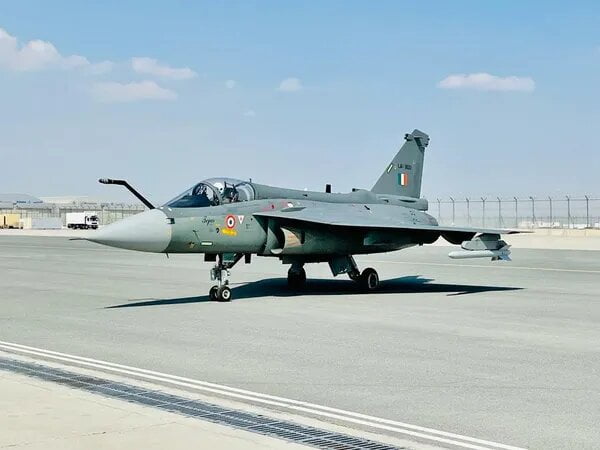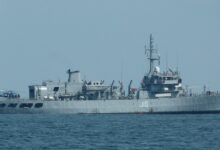Local “Tejas” Aircraft Doing Well In Malaysia’s LCA Tender Competition

- The Israeli EL/M-2052 radar on the Tejas planes that were given to the RMAF will be replaced by India's Uttam Active Electronically Scanned Array (AESA) radar.
- Tejas has the advantage of being able to use advanced air-to-air missiles like BrahMos, which gives it more power when attacking.
As part of the Fighter Lead In Trainer-Light Combat Aircraft (FLIT-LCA) programme, Malaysia has put out a call for bids for 18 jets. As part of the Royal Malaysian Air Force’s (RMAF) Capability Development 2055 strategy, Malaysia’s FLIT programme plans to buy 18 light combat aircraft with the first purchase and another 18 jets with the second purchase in 2025.
Possible candidates include the FA-50 from Korea Aerospace Industries (KAI), the Sino-Pakistani JF-17 from Pakistan Aeronautical Complex and Chengdu Aircraft Corporation, the Italian M-346 from Leonardo, the Russian Yak-130, and the Indian Hindustan Aeronautics (HAL) Tejas Mk 1.
At the same time, BAE Systems, which has given the Malaysian fleet Hawk 108 trainer planes and Hawk 208 attack planes, said that its planes could be improved in different ways.
Malaysia, which has a small budget, has a history of “putting off” defence purchases. So, for many years, it tried to replace the MiG-29 fighters that were taken out of service with 18 new combat planes, but this did not work.
Malaysia was recently reminded that combat planes are still important in today’s political situation. On June 1, 2021, two transport planes from the People’s Liberation Army Air Force (PLAAF), the Xi’an Y-20 and the Ilyushin Il-76, did something that had never been done before: they flew into the South China Sea. When they were less than 111 km from Malaysia, fighters from the Royal Malaysian Air Force (RMAF) stopped them.
Some of the reasons for these flights are the oil resources in Kuala Lumpur’s exclusive economic zone and China’s efforts to find out more about Malaysia’s anti-aircraft capabilities.
HAL LCA has a fair chance
In October 2021, HAL gave its plan to the Malaysian Ministry of Defense (MINDEF). HAL said that the two-seat Tejas LIFT (Lead in Fighter Trainer) model had a good chance of winning the competition because it met all of the RMAF’s requirements.
It’s backed up by Jane’s Intel, which recently said that the LCA-Tejas offer from HAL has a “fair chance” of winning the bid because it meets “all the parameters that RMAF was looking for in its FLIT programme.” The report also says that the FA-50, which was made by KAI and has a similar sensor package for less money, is a serious competitor.
Janes Intel says that the LCA-Tejas has been offered at $32 million per unit, while the FA-50 has been offered at $26.5 million per unit. As asked by the RMAF, the Koreans have made sure the planes can be refuelled in flight, but they haven’t been tested yet.
Janes says that the LCA-Tejas is the most expensive jet on the market, at $32 million, other than the Mig-35, which is unlikely to be approved by RMAF because of its history with the Mig-29 type.
But it’s possible that the number is not correct. The price of the offer may be $32 million, but no one knows what the final price will be.
On August 18, HAL signed a memorandum of understanding to set up an office in Kuala Lumpur. The office in KL will be in charge of selling HAL’s goods and services in South East Asia.
A press release from HAL said that the Malaysian office would help find new business opportunities for FLIT LCA and other RMAF needs. HAL thinks the Malaysian government will announce the winning bid soon.
The Israeli EL/M-2052 radar on the Tejas planes that were given to the RMAF will be replaced by India’s Uttam Active Electronically Scanned Array (AESA) radar. The modern radar made in India is better than the mechanical radar on the FA-50, which is its closest competitor. HAL says that there are alternatives to some Israeli parts. HAL will also include any ammunition that the customer wants.
Tejas has the advantage of being able to use advanced air-to-air missiles like BrahMos, which gives it more power when attacking. Again, the FA-50 loses because it can’t use these kinds of weapons. HAL is also looking for contracts in the Philippines. In April, it signed an agreement with the Philippines Aerospace Development Corporation to set up an MRO facility.







Facebook Comments